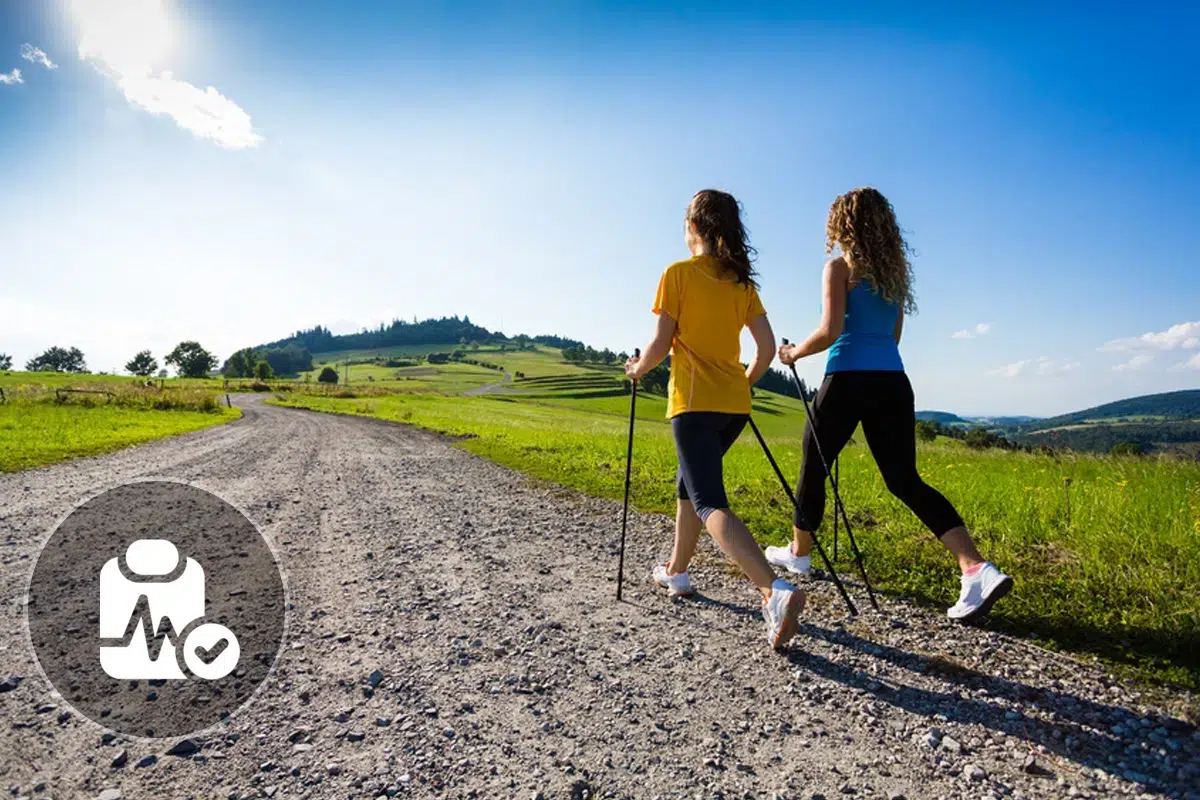Show summary Hide summary
What are the health benefits of Nordic walking?

Everything you need to know about Nordic walking
What are the health benefits of Nordic walking? Use the tool below to find out all the benefits of Nordic walking and discover whether this activity meets your goals and expectations.
More information on Nordic walking
Is Nordic walking good for your health? Is it a good sport for everyone? Whether you’re a beginner or an experienced walker, here’s a list of the benefits and problematics you may encounter when Nordic walking.

TOP 5 health benefits of Nordic walking!
Nordic walking is the healthy way to improve your well-being and fitness. If practised regularly, Nordic walking can :
- Make you resume physical activity in a gentle way
- Stimulate the cardiovascular system and breathing
- Protect joints and relieve back strain
- Strengthen muscles and fortifies bones
- Help you relax and improve the quality of your sleep
Contraindications and drawbacks of Nordic walking
Accessible to all, this sport requires no particular physical condition. There are no major contraindications. However, if you have problems with your joints or lower limbs (ankles, knees, hips), it’s advisable to seek your doctor’s advice.
What is Nordic Walking? Information and practical advice
Who can practice Nordic walking?
Would you like to get some exercise without feeling too rushed, while going a little further than ordinary walking or brisk walking?
Originating in Finland in the ’70s, Nordic walking is a trend that’s becoming increasingly popular. Inspired by cross-country skiing, Nordic walking is accessible to all, regardless of age or physical condition. In short, Nordic walking is the all-in-1 getaway that lets you burn off energy, get some fresh air and meet new people.
When and how to do Nordic walking?
Nordic walking differs from ordinary walking in that its pace averages between 7 and 9 kph. It is practised in small groups. This outdoor exercise allows you to resume the natural movement of walking with poles. To help you choose the right poles, multiply your height (in cm) by 0.68. This will give you the size of poles you need. If, however, the result is between two pole sizes, opt for the smaller ones.
Even though Nordic walking is based on the natural movement of ordinary walking, don’t forget to :
- Keep a straight spine posture
- Keep your shoulders and arms relaxed
- Roll your foot naturally from heel to toe
- Breathe normally
- Wear a good pair of comfortable, lightweight shoes to protect your heel and support the natural rolling motion of your foot.
Everything you need to know about Nordic walking
All sports in detail!




















































